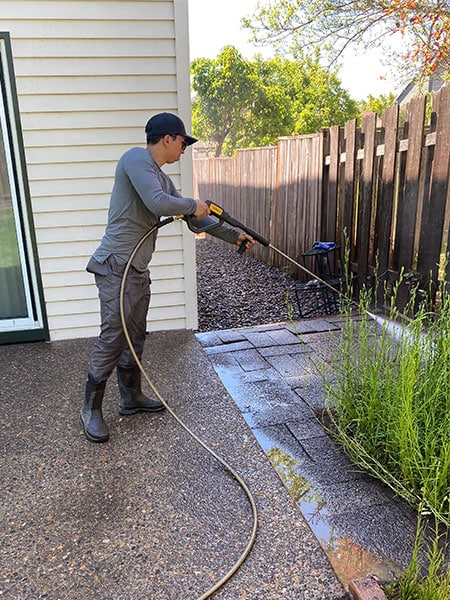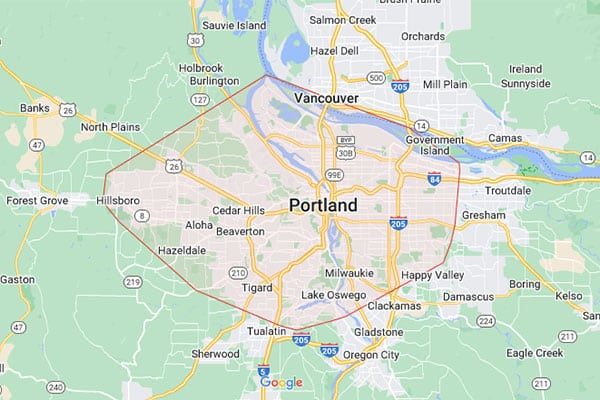Introduction to House Washing: What You Need to Know
House washing might not be the first thing on your mind, but it’s vital for keeping your home in top shape. Think of it as a bath for your house. Just like you, your house gets dirty over time. Dirt, grime, and even mold can build up on the outside, making it look old before its time. Plus, these unwelcome guests can cause damage if left unchecked. House washing is about getting rid of all that, making your place look great and protecting it too. There are a couple of ways to wash a house. The first is pressure washing, where high-pressure water blasts away the dirt. The second is soft washing, which uses lower pressure and often some cleaning solutions to get the job done gently, perfect for more delicate surfaces. Which one you need depends on what your house is made of and how dirty it is. You don’t have to wash your house every month, but doing it regularly is a good idea. How often? That’s what experts can help you figure out, based on where you live and what your house is up against.
The Importance of Regular House Washing
Regular house washing isn’t just about keeping your home looking good; it goes way beyond that. Neglect can lead to the buildup of harmful substances like mold, mildew, and algae on your home’s exterior. These aren’t just unsightly; they can also weaken your house’s structure and paintwork, making repairs more costly down the line. Experts stress the significance of washing your house regularly to prevent these problems. It’s not only about aesthetics; it’s about maintaining the integrity and value of your property. Regular cleaning keeps these harmful substances at bay, ensuring your home isn’t just clean but also in sound condition. Plus, a well-maintained home holds its value better, an important point if you’re considering selling any time soon. In short, think of house washing as a preventive measure that saves money and hassle over time.
Expert Recommendations on House Washing Frequency
Experts say washing your house should happen every 6 to 12 months. Think of it as a yearly health check for your home. This frequency keeps dirt, grime, and harmful pollutants off your walls, ensuring they don’t turn into permanent damage. But, it’s not just about the clock. If you’re in an area with lots of trees, near the ocean, or where pollution is high, consider cleaning more often. Also, materials matter. Brick might need less frequent washing than vinyl siding, which can easily harbor mold and mildew. Always check with a pro if unsure but aim for that yearly cleanse to keep your home looking its best.
Factors That Affect How Often You Should Wash Your House
The number of times you need to wash your house can vary. Some key factors play a big role in deciding this. First, look at your home’s location. Homes in areas with a lot of dust, pollen, or near the sea where salt builds up need more frequent washes. Next is the weather. Places with lots of rain or humidity can make your house a hotspot for mold and mildew, pushing you to wash it more often. Also, think about the pollution levels. More pollution means your house can get dirty quicker, requiring more regular cleanings. Lastly, the type of siding on your house matters. Some materials hold onto dirt longer or are more prone to damage from the elements. Each of these factors can help you figure out how often you should be giving your house a good wash. Aim for at least once a year, but if any of these factors are hitting hard, you might need to do it more frequently.
Seasonal Considerations in House Washing Schedules
When deciding how often to wash your house, think about the seasons. Each season can throw different challenges at your home, impacting how dirty it gets. In areas with a lot of trees, spring can cover your house with pollen and seeds, making it a good time for a wash. Summer brings heat and humidity, leading to mildew and mold on siding, especially in shady areas. A mid-summer wash can keep these issues in check. Fall might fill your gutters and cover your home with leaves and debris, while winter’s cold can make your house look dingy from salt and dirt buildup, especially in snowy regions. A good rule of thumb is to schedule a house wash with each season change, focusing on specific needs like clearing gutters in the fall or removing salt residue in late winter. This approach keeps your home looking its best year-round.
Different Methods of House Washing Explained
House washing isn’t just a bucket of soapy water and a sponge. Several methods exist to get your home’s exterior looking fresh, each suited to different types of grime and house materials. The most common methods are pressure washing, soft washing, and manual washing. Pressure washing blasts water at high pressure to remove stubborn dirt, mold, and grime. This method is perfect for concrete, brick, and other sturdy materials but can damage softer surfaces. Soft washing uses lower pressure and often involves a blend of cleaning solutions to gently remove dirt and buildup. It’s ideal for wood, vinyl siding, and other materials that could be damaged by high pressure. Lastly, manual washing is exactly as it sounds—scrubbing by hand. It’s labor-intensive but offers precise control over cleaning. Depending on your home’s specific needs, one of these methods will be your go-to for keeping it sparkling clean.
How to Evaluate Your House’s Need for Washing
Looking at your house and thinking it could use a wash? Here’s how to tell if it’s time. First, consider the last time you had it cleaned. If it’s been a year or more, it’s likely due. Most experts suggest yearly washing to keep your home in top shape. Next, examine the exterior. See any green algae, mold, or mildew? These not only look bad but can damage your home over time. Also, look for dirt and grime buildup, especially on the shady sides of your house. Notice any discoloration or paint starting to chip? That’s a sure sign. Finally, think about your location. Homes near busy streets or in areas with lots of trees and pollen might need washing more often. If your house ticks any of these boxes, it’s probably time for a wash. Remember, keeping your house clean is not just about looks. It’s about protecting your investment and ensuring your home stays beautiful and damage-free for years to come.
Preparing Your Home for a House Washing Service
Before the house washing team arrives, a bit of prep can make the whole process smoother and protect your belongings. First, ensure all windows are closed tight so water can’t sneak in. It’s a good idea to remove or secure anything outside that might get damaged, like garden decorations or potted plants. If you have outdoor furniture, either move it away from the house or cover it up. Check for any open vents or areas where water could enter and seal them off. Lastly, if there are specific areas of concern on your home’s exterior, like stubborn stains or mildew, point them out to the washing team. A bit of prep not only safeguards your stuff but helps the cleaning crew be more efficient.
What to Expect During the House Washing Process
When you decide it’s time for a house wash, knowing what the process involves can help set your expectations right. Generally, a professional house wash can be broken down into a few key steps. First, a thorough inspection of your home’s exterior is done. This is crucial for identifying any areas that might need special attention or a gentler approach. Don’t worry; pros know exactly what to look for. They then choose the best cleaning method for your home, often deciding between pressure washing or soft washing. Pressure washing uses high-velocity water jets to blast away dirt, grime, and mildew. It’s great for hard surfaces like brick and stone. Soft washing, on the other hand, uses lower pressure and often involves cleaning solutions to gently cleanse more delicate surfaces like vinyl siding without causing damage. The cleaning crew will protect your plants, outdoor fixtures, and nearby features before they start. They’ll cover or move items that might get damaged or interfere with the cleaning. Once everything’s prepped, the actual washing begins. The crew systematically works around your home, ensuring every surface is properly cleaned. After washing, they’ll rinse off any cleaning solutions and debris, revealing your home’s refreshed exterior. Finally, a post-wash inspection ensures everything meets their standards and your expectations. The whole process is pretty straightforward, and a professional team works efficiently to minimize any disruption to your day. So, when you book a house washing service, you can expect a detailed, careful approach that leaves your home looking its best.
Conclusion: Balancing Maintenance and Care with Expert Advice
Wrapping up, striking the right balance in how often you should wash your house comes down to listening to expert recommendations while weighing your home’s specific needs. Professionals lean towards a general guideline of washing your home every 1 to 2 years to keep it looking its best and protecting its value. This timeframe can help prevent buildup of dirt, mold, and mildew that can damage your home over time. Yet, your schedule might vary based on your home’s location, the surrounding environment, and the materials used in your home’s construction. Homes in areas with high humidity or near trees might need more frequent washes, while homes in less exposed areas might not need to be cleaned as often. Remember, regular maintenance not only keeps your home looking great but also can prevent costly repairs down the line. So, consider these factors, consult with professionals if you’re unsure, and develop a house washing routine that keeps your sanctuary spotless without overdoing it.












